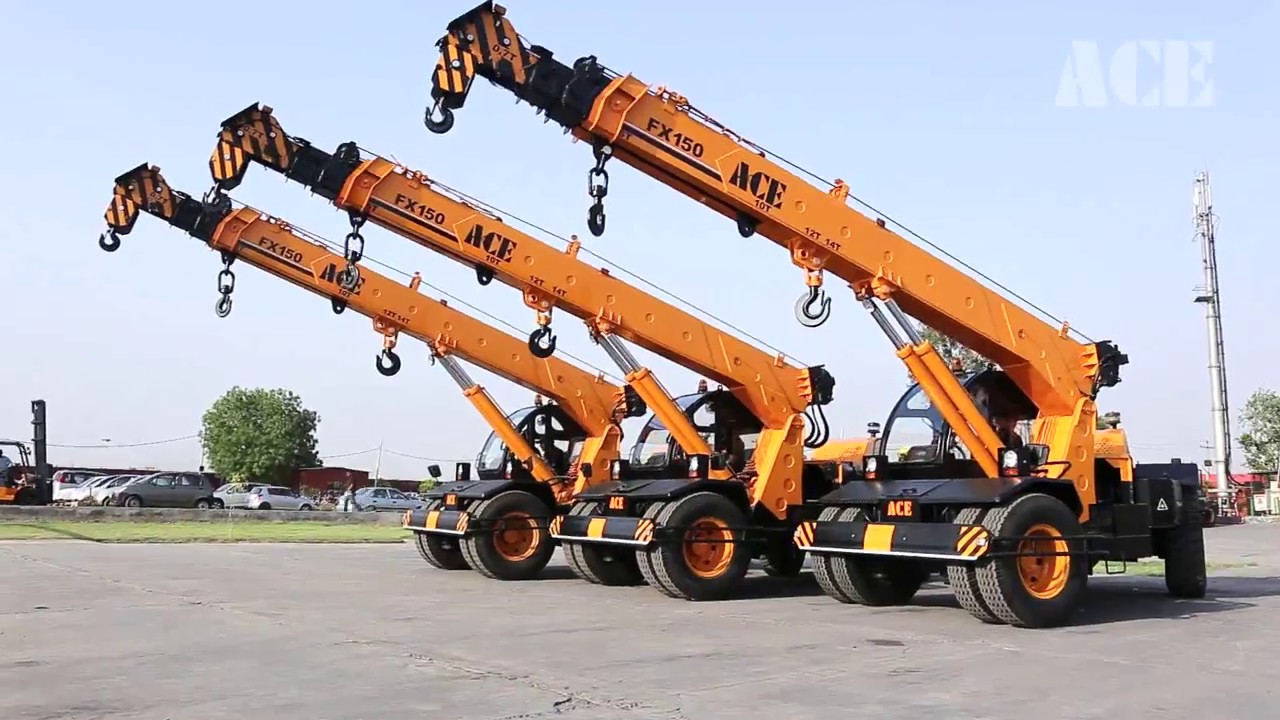This is a comprehensive guide that provides detailed information about different types of cranes, ranging from tower cranes to mobile cranes. This guide aims to give you a better understanding of these machines, their features, and their specific applications.
Here are some important types of cranes commonly used
Different types of Cranes used in the crane club:
- Tower Cranes:
- Mobile Cranes:
- Crawler Cranes:
- Rough-Terrain Cranes:
- Overhead Cranes:
- Gantry Cranes:
- Jib Cranes:
- Floating Cranes:
- Loader Cranes:
Tower Cranes:
Tower cranes are tall, fixed cranes that are commonly used in construction projects, especially for high-rise buildings and large-scale infrastructure development. Tower cranes are known for their impressive lifting capacities, height capabilities, and precise control. Here are some key aspects to consider when discussing tower cranes:
Overview:
Tower cranes are stationary structures that are erected on a concrete base or a specially designed tower mast. They have a vertical mast that provides stability and a horizontal jib (or boom) that extends outward. Tower cranes are typically used for projects that require heavy lifting at great heights and in areas with limited space.
Features:
Height and Reach: Tower cranes are known for their exceptional height capabilities. They can reach significant heights by adding tower sections as the building rises. The jib can extend horizontally to cover a large area and reach specific points on the construction site.
Load Capacity: Tower cranes have high load capacities, allowing them to lift and move heavy construction materials, equipment, and prefabricated components. The load capacity can range from a few tons to over 20 tons, depending on the specific model and configuration.
Counterweights: To maintain stability, tower cranes use counterweights on the opposite end of the jib from the load. These counterweights balance the weight and prevent the crane from tipping over during lifting operations.
Applications:
- High-Rise Construction: Tower cranes are extensively used in the construction of tall buildings. They can handle the lifting and placement of heavy construction materials, such as steel beams, concrete panels, and precast components, to different levels of the building.
- Precise Positioning: Tower cranes excel at precise positioning of materials and equipment. Their height and reach allow them to deliver loads to specific locations on the construction site with accuracy, making them essential for projects that require precise control.
- Urban Construction: Tower cranes are well-suited for construction in urban areas where space is limited. Their vertical structure enables them to operate in confined spaces without obstructing traffic or nearby buildings.
- Heavy Lifting: Tower cranes are often utilized for heavy lifting tasks, such as placing heavy machinery or large components during industrial installations or infrastructure projects.
Mobile Cranes:
Mobile cranes are a type of crane that is designed for easy transportation and setup on various job sites. They are versatile machines capable of performing a wide range of lifting and loading tasks. Here are some key aspects to consider when discussing mobile cranes:
Overview:
Mobile cranes are known for their mobility and flexibility. They are mounted on carrier vehicles such as trucks or specialized chassis, allowing them to be easily transported between different locations. Mobile cranes are popular in construction projects, infrastructure development, and other industries that require frequent relocation.
Features:
Telescopic or Lattice Boom:
Mobile cranes typically have either a telescopic boom or a lattice boom. Telescopic booms consist of multiple sections that can be extended or retracted to adjust the crane’s reach. Lattice booms are made up of a network of steel beams that provide high strength and stability.
Carrier Vehicles:
Mobile cranes can be mounted on various types of carrier vehicles, including truck-mounted cranes, rough-terrain cranes, and all-terrain cranes. Each type of carrier vehicle has specific advantages and suitability for different terrains and working conditions.
Outriggers:
Mobile cranes are equipped with outriggers, which are extendable supports that stabilize the crane during lifting operations. Outriggers increase the crane’s stability by providing a wider base of support.
Applications:
- Construction: Mobile cranes are extensively used in construction projects for lifting and placing heavy materials, such as steel beams, concrete panels, and prefabricated components. They can be quickly set up on construction sites and offer high lifting capacities to handle demanding tasks.
- Infrastructure Development: Mobile cranes play a vital role in infrastructure projects like bridge construction, road maintenance, and installation of utility poles. Their mobility allows them to access remote or difficult-to-reach locations.
- Industrial Operations: Mobile cranes are employed in industrial settings for various purposes, including loading and unloading heavy machinery, transporting equipment within a facility, and assisting in maintenance and repair tasks.
- Disaster Response: Mobile cranes are crucial during disaster relief efforts. They can be used to clear debris, lift heavy objects, and aid in search and rescue operations in the aftermath of natural disasters or accidents.
Conclusions:
In conclusion, the crane club plays a crucial role in various industries and construction projects. Understanding different types of cranes helps in choosing the right equipment for specific applications. Tower cranes are known for their height and lifting capacities, making them ideal for high-rise construction in the crane club. Mobile cranes offer versatility and mobility, allowing them to be easily transported and used in different job sites.

